AUGUSTA — Republican Shawn Moody came out on top in the governor’s race when votes from over 13,000 students attending 62 schools around Maine were tabulated during the culmination of the Student Mock Election at the Augusta Armory on Wednesday.
Moody received 5,306 votes, or 39.4 percent of the total gubernatorial vote, topping Democrat Janet Mills’ 4,583 votes, or 34 percent of the vote, according to results posted on the mock election webpage. Independents Terry Hayes and Alan Caron received 13.9 percent and 11.3 percent of the vote, respectively.
The students also voted in the U.S. Senate and House of Representative races and the incumbents all prevailed.
Independent Sen. Angus King got 52.4 percent of the vote to outdistance his closest opponent, Republican Eric Brakey with 25.5 percent. Rep. Chellie Pingree, D-1st District, received 46.5 percent to 29.5 percent for Republican Mark Holbrook. Rep. Bruce Poliquin, R-2nd District, edged Democrat Jared Golden, 39.8 percent to 35.8 percent. The students also voted on the five referendum questions, approving all of them by double-digit margins.
Balloting has been underway since the beginning of the month and students at the armory Wednesday for the “Rally and Tally” event hosted by the Secretary of State’s Office worked on phones and laptops as the results came in from schools around the state.
Olivia Heath read aloud results that had been emailed from participating schools as her Oak Hill classmate Kaylee Panzino typed those results into an online database where the mock election results were tallied throughout the day.
Both said they voted in the mock election and found the voting to be easy. Both also said it’s an important thing to do, and something they’ll do when they turn 18.
“It’s important to vote so you know who is running your country,” Panzino said.
The students also got to see how ranked-choice voting works, electing Batman as animal control officer in a four-superhero race, picking him by eight votes over Wonder Woman after three rounds of balloting. The other candidates – Superman and Aquaman – were counted out in the first and second rounds, respectively. In the third round, Batman crossed the 50 percent threshold required to have a majority of votes cast and thus be declared the winner.
Oak Hill Middle School student Joshua Bonner voted for Superman as his first choice. He ranked Aquaman as his second choice, Wonder Woman as his third and Batman as his fourth. Bonner said he understood how ranked-choice voting works, though he said some people might find the voting method confusing in a race with a lot of candidates to choose from and rank.
Tyson Downs, an eighth-grader at Mount View Middle School in Thorndike, voted for Wonder Woman, only ranking her and not ranking any of the other superheros, which also is an acceptable way of voting under the method. Downs, conceded that he didn’t fully understand how ranked-choice voting works.
Sam Howes, a staff member of the Secretary of State’s Office, which also oversees Maine’s election next month, sought to explain ranked-choice voting to students by using different-colored sticky notes.
He had each of them rank their favored “candidates,” in this case their favorite colors, then tallied up who got the most votes and how the other colorful candidates ranked, eliminating the candidate receiving the fewest votes in a goal to eliminate candidates until one of them got 50 percent of the vote or more.
Even he hit a glitch, however, pausing to look up the rules for how to rank two candidates who received the same number of votes in one round.
Oak Hill student Sierra Lane eyed the array of colors carefully before voting, ranking purple her favorite, followed by blue and green.
She said ranked-choice voting seemed pretty easy, and she thinks it’s a better way to pick candidates than the traditional method of each person voting for only one candidate and the candidate who gets the most votes wins, regardless of whether that candidate received at least 50 percent of the vote.
Kristen Muszynski, director of communications for the secretary of state, said when the real election results are tallied, the state will use computers pre-programmed with an algorithm specifically created for ranked-choice vote counting. She said the system already is locked down for the Nov. 6 elections and couldn’t be used for the mock elections. The other races on this year’s ballot, including the race for governor, will not use ranked-choice voting.
Secretary of State Matt Dunlap urged students to vote and to seek elected offices at all levels, ranging from sewer district commissioner to U.S. senator.
“It’s not always glamorous work, but it’s always important work, and all that starts with you voting,” Dunlap said. “Because the world is run by those who show up.”
Copy the Story Link
Send questions/comments to the editors.


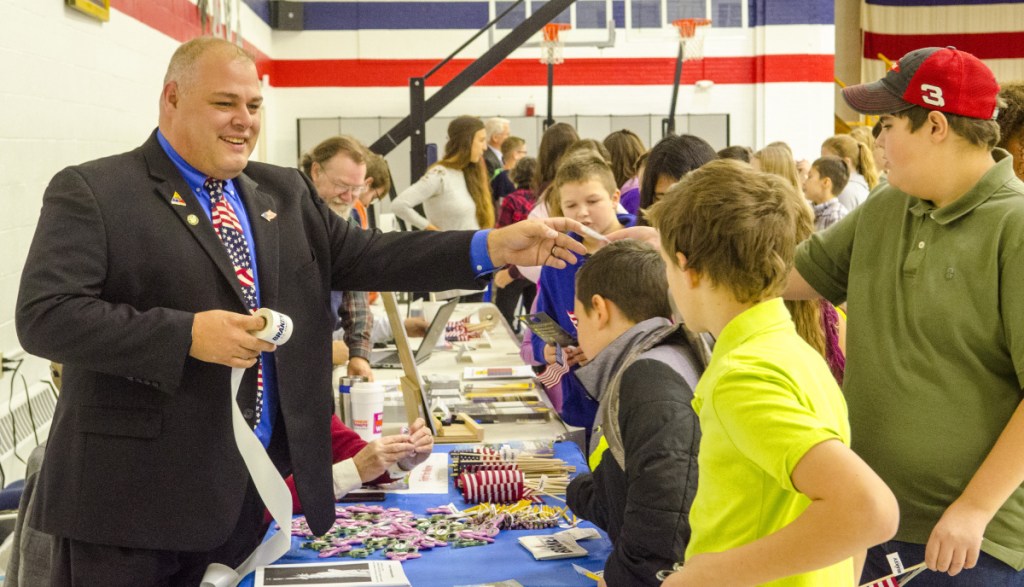
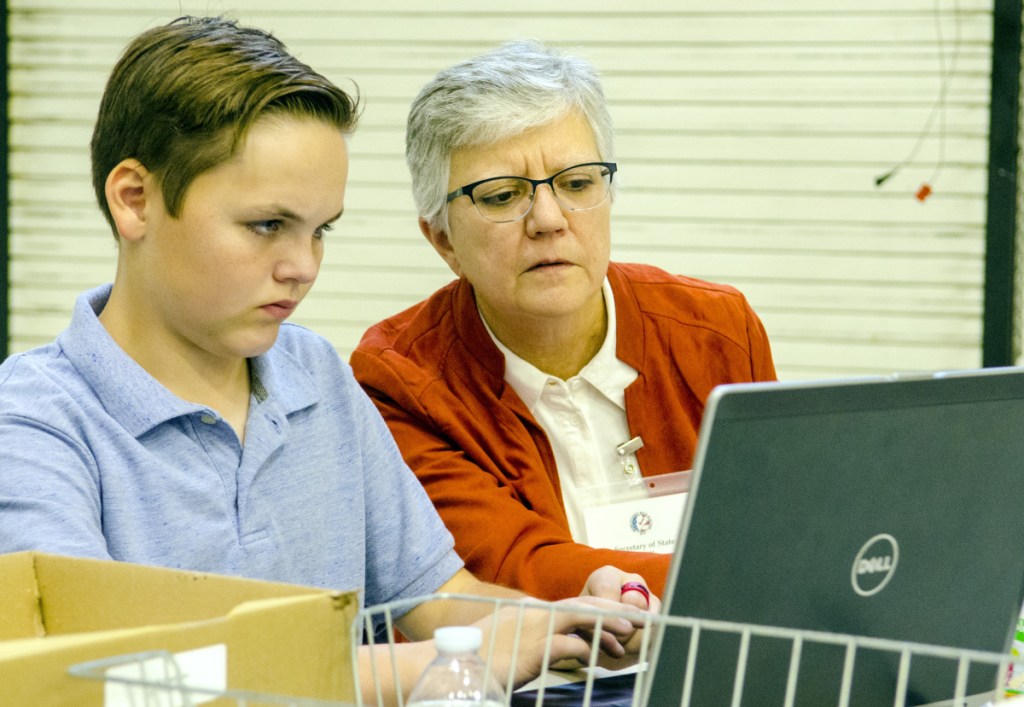

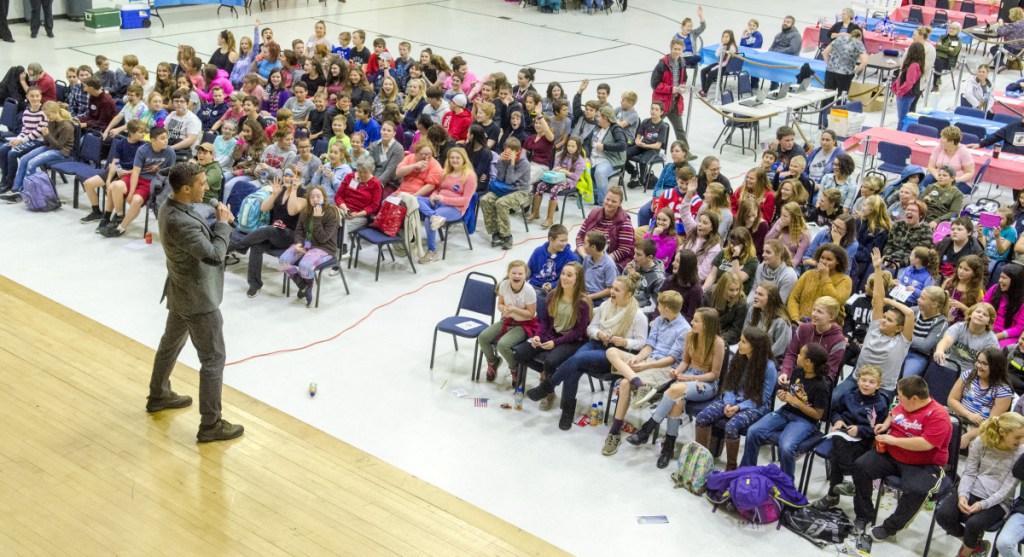
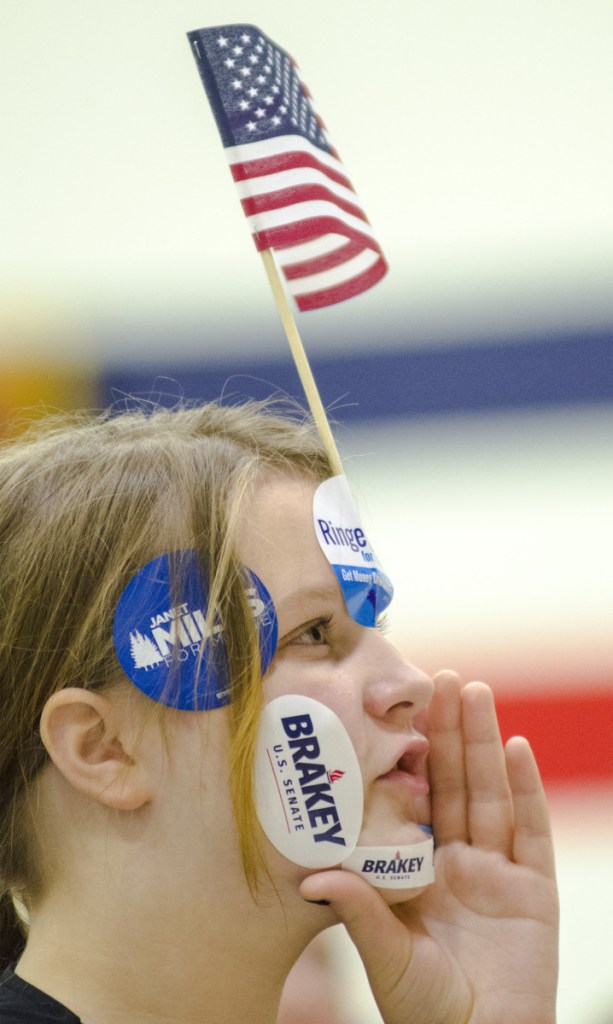
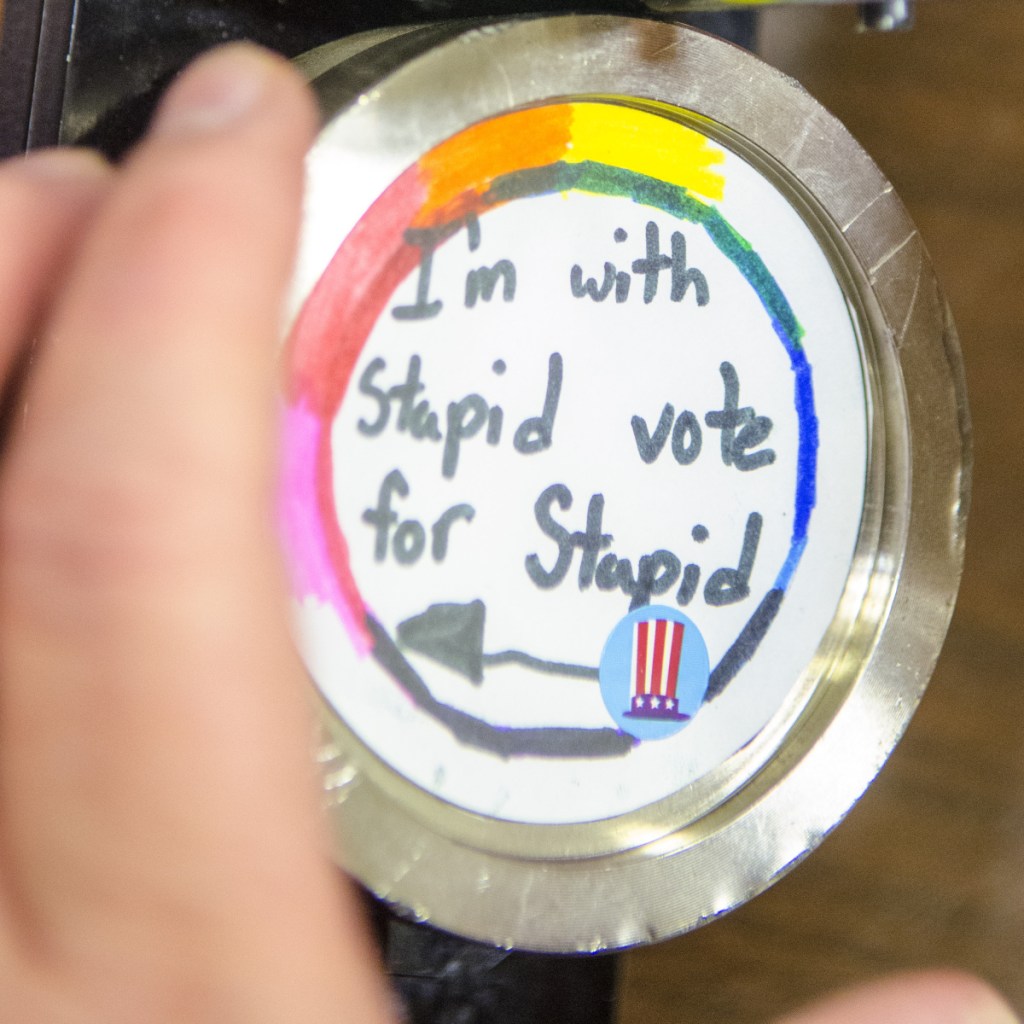
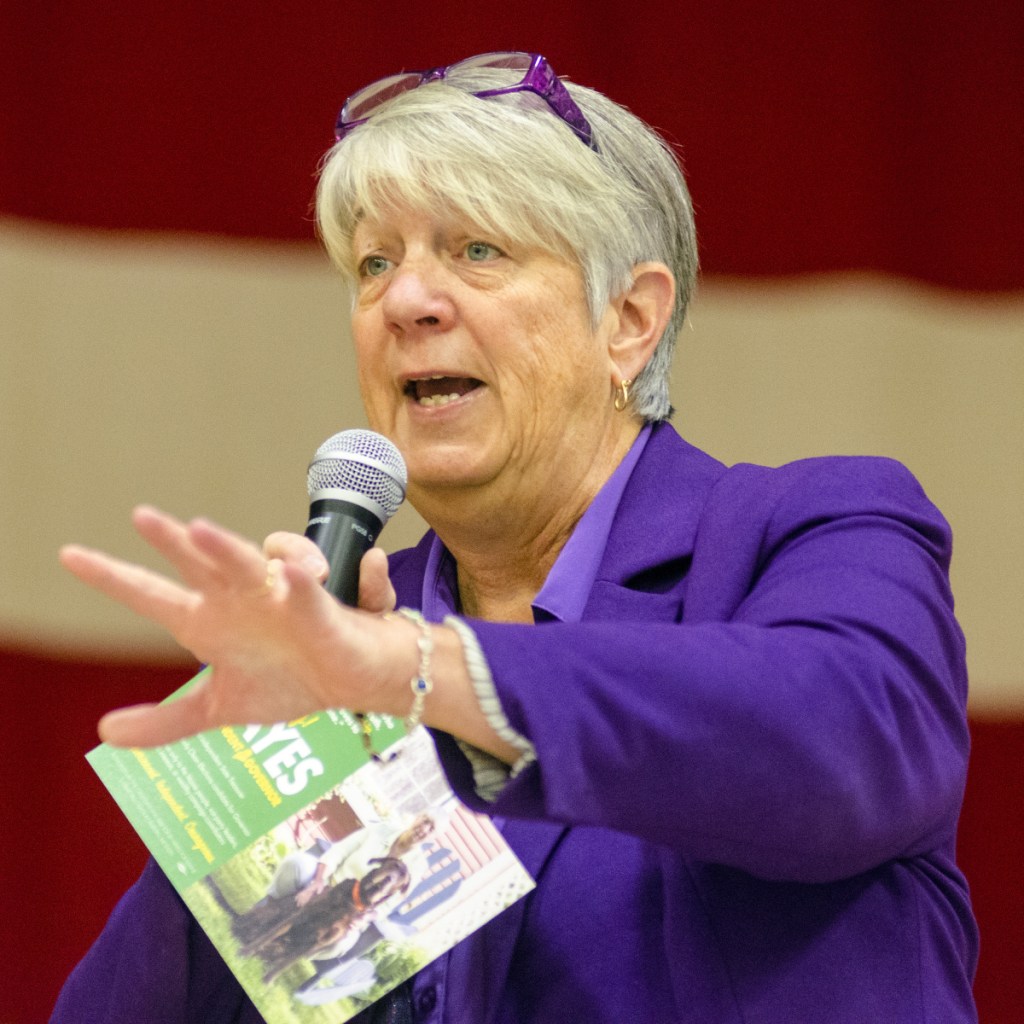
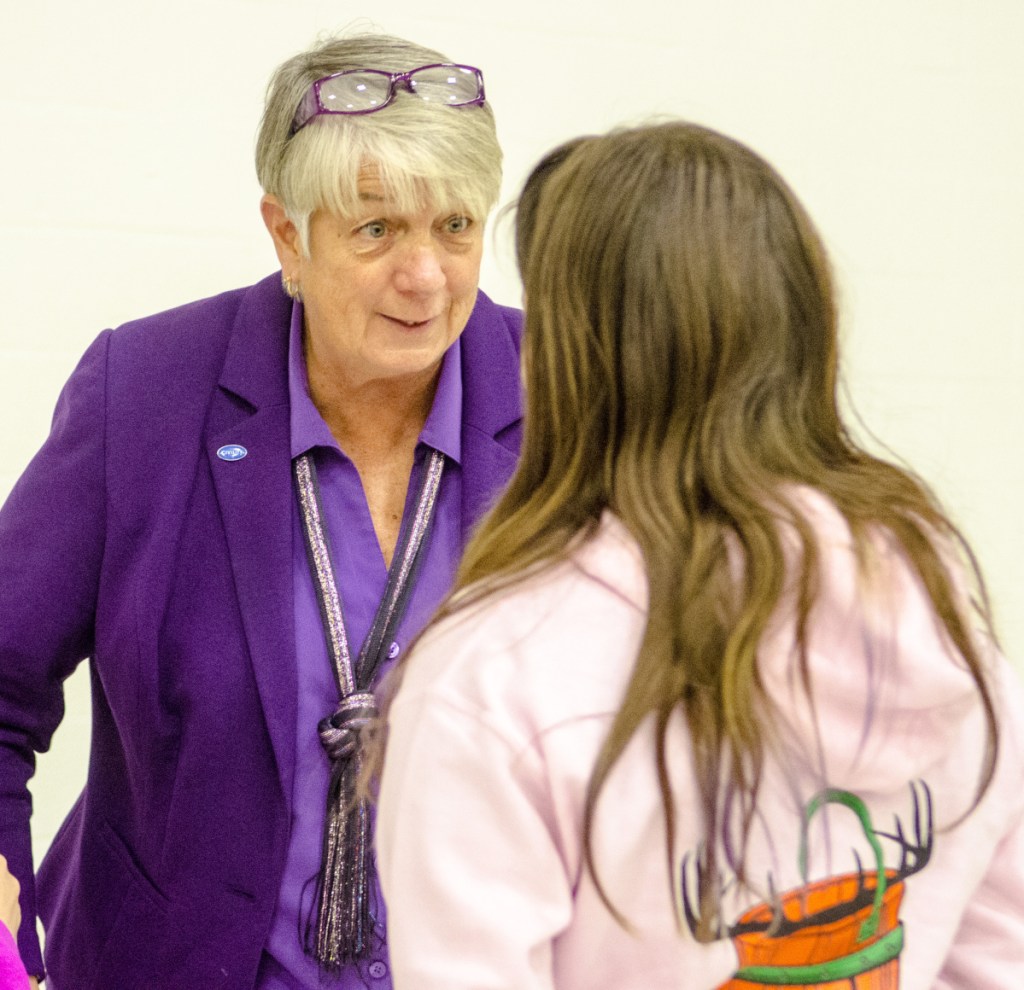
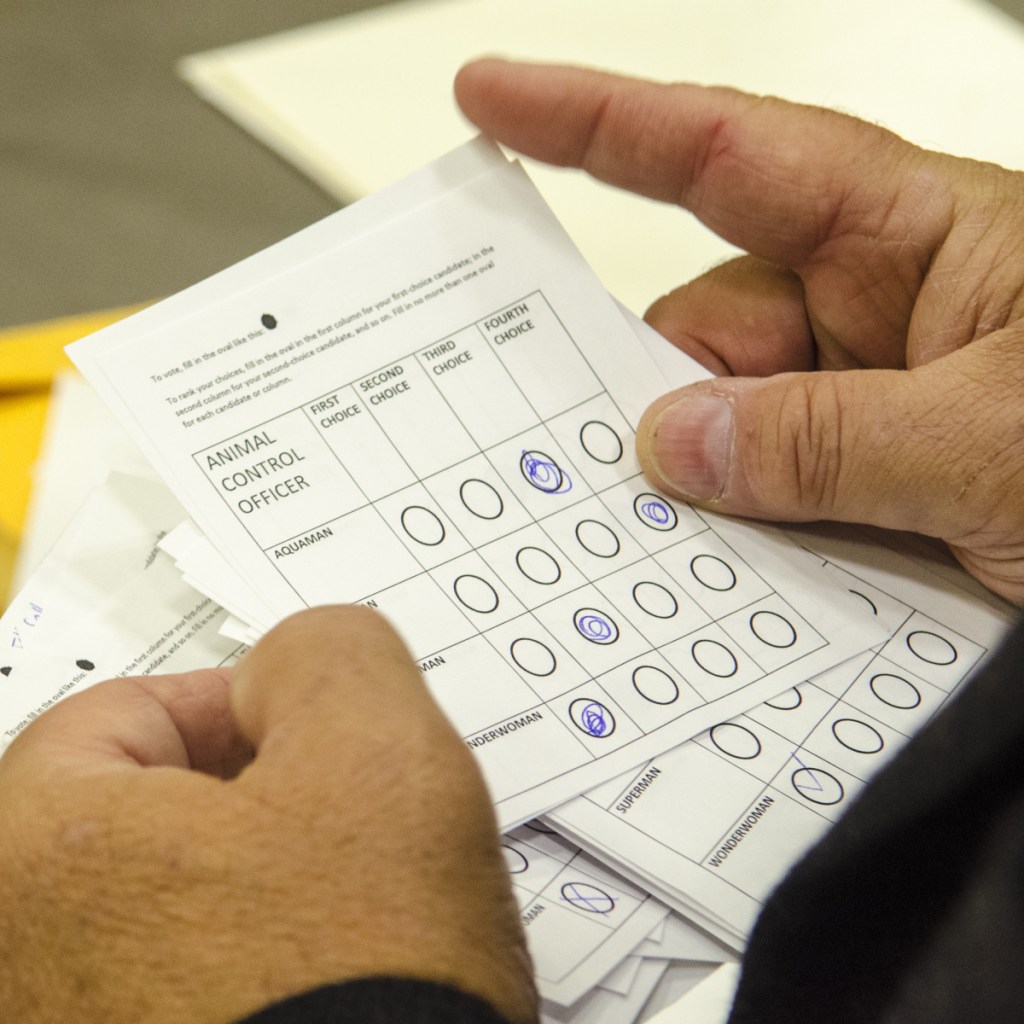
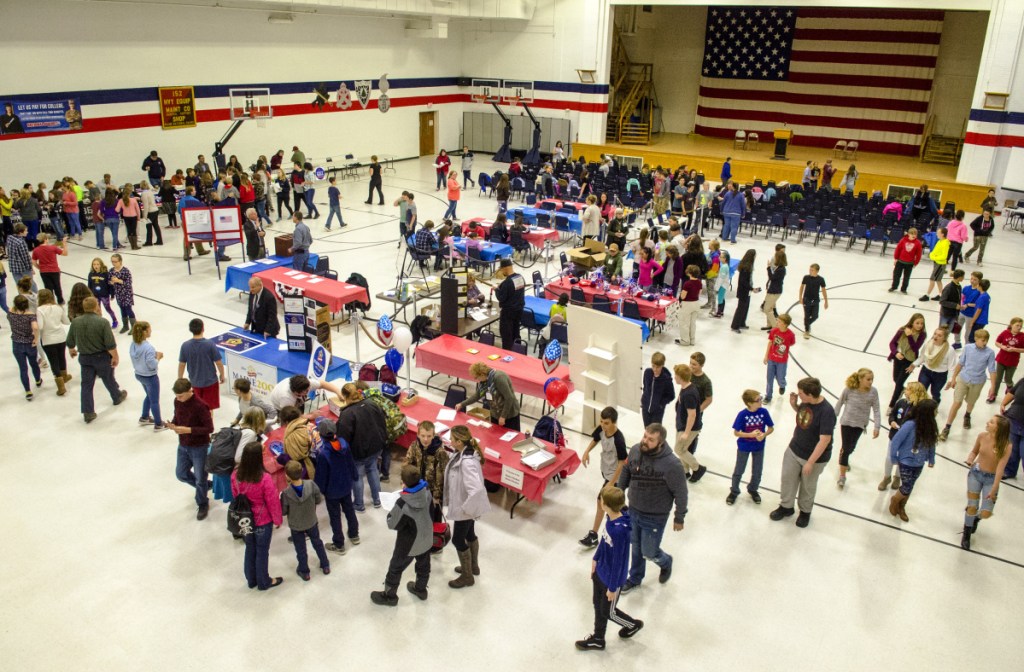

Success. Please wait for the page to reload. If the page does not reload within 5 seconds, please refresh the page.
Enter your email and password to access comments.
Hi, to comment on stories you must . This profile is in addition to your subscription and website login.
Already have a commenting profile? .
Invalid username/password.
Please check your email to confirm and complete your registration.
Only subscribers are eligible to post comments. Please subscribe or login first for digital access. Here’s why.
Use the form below to reset your password. When you've submitted your account email, we will send an email with a reset code.